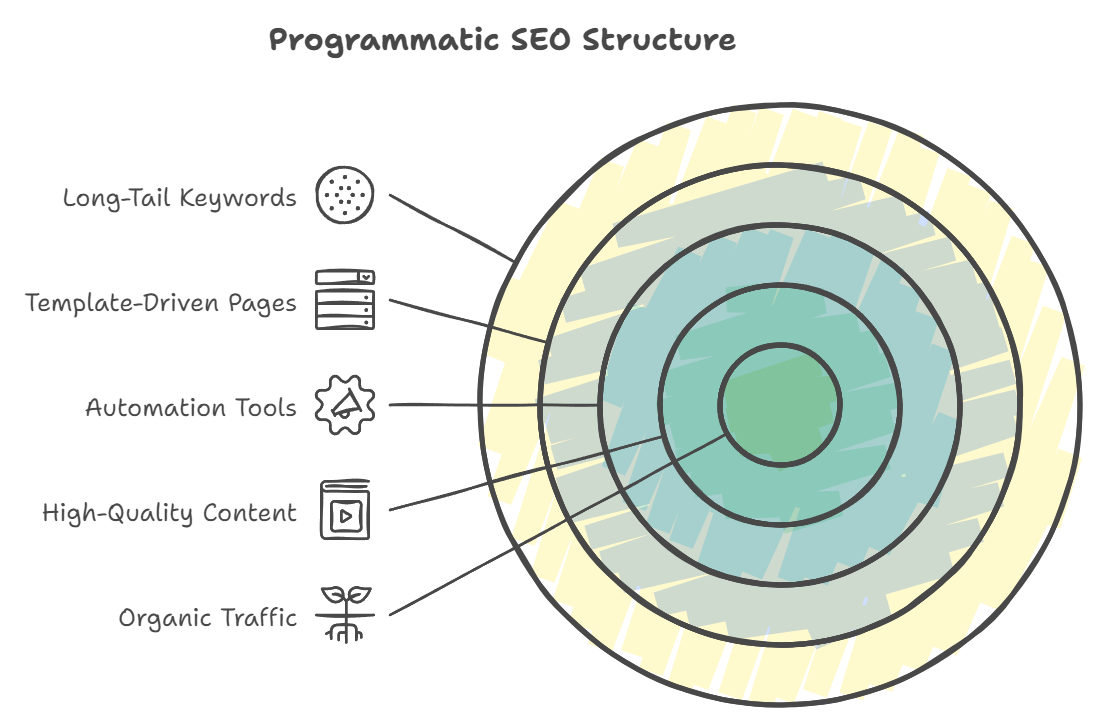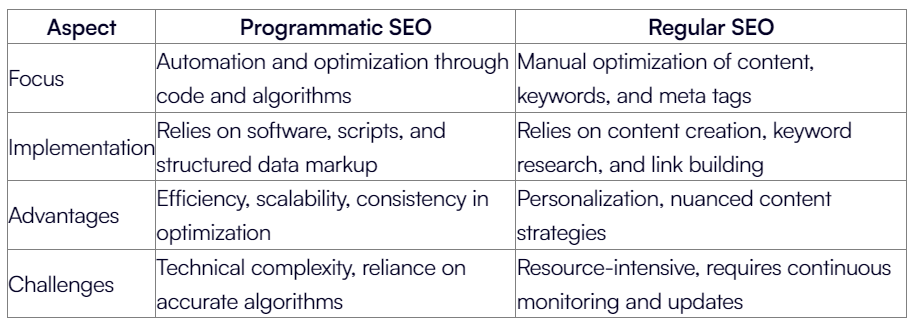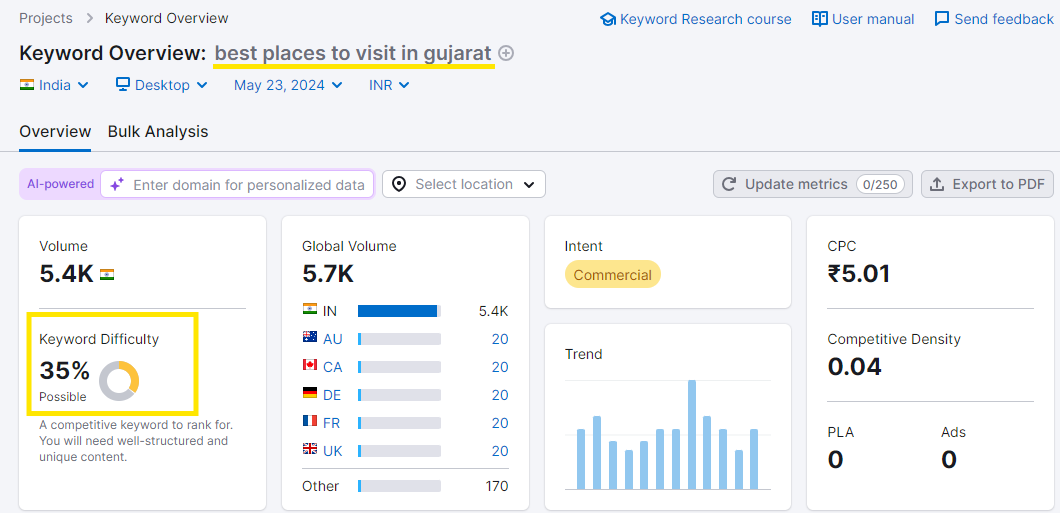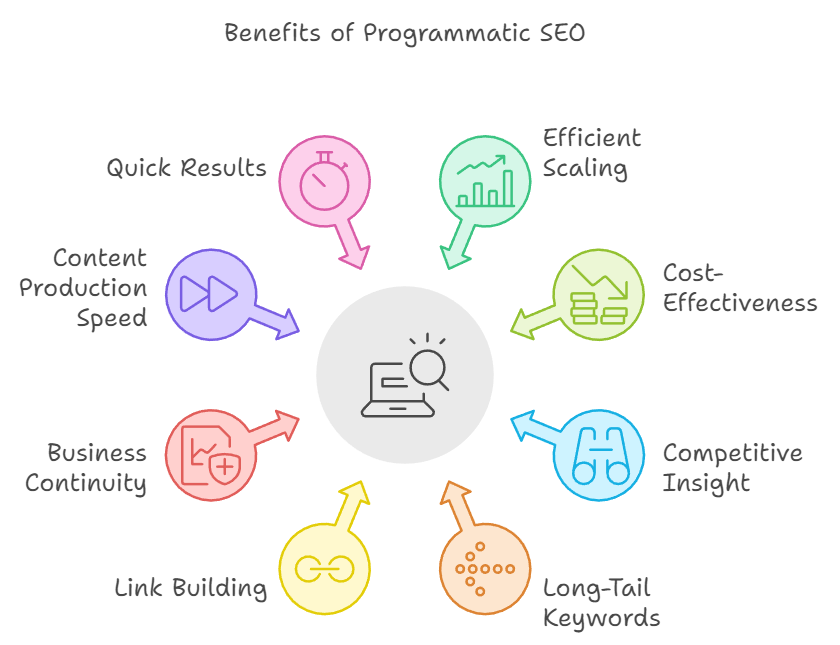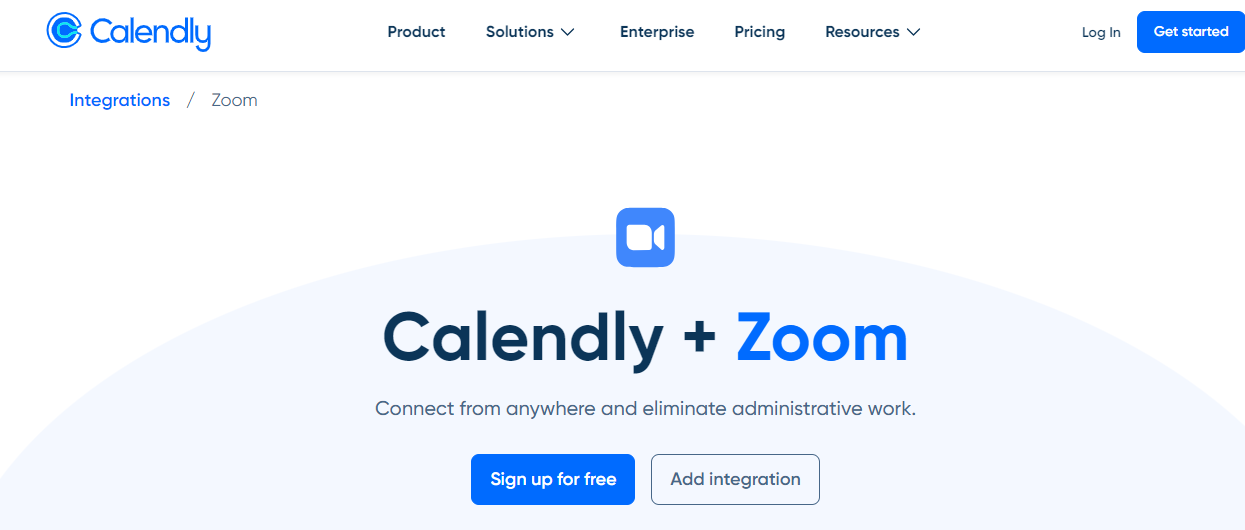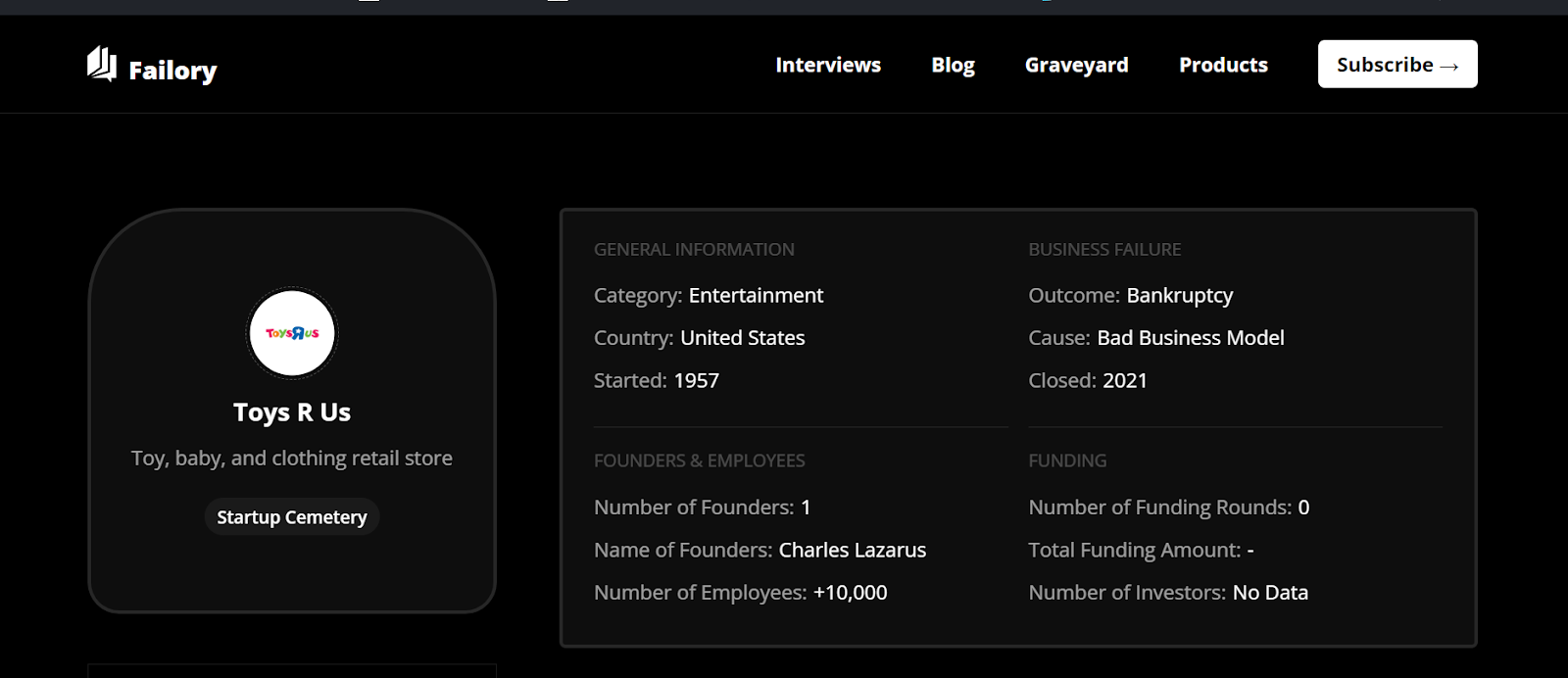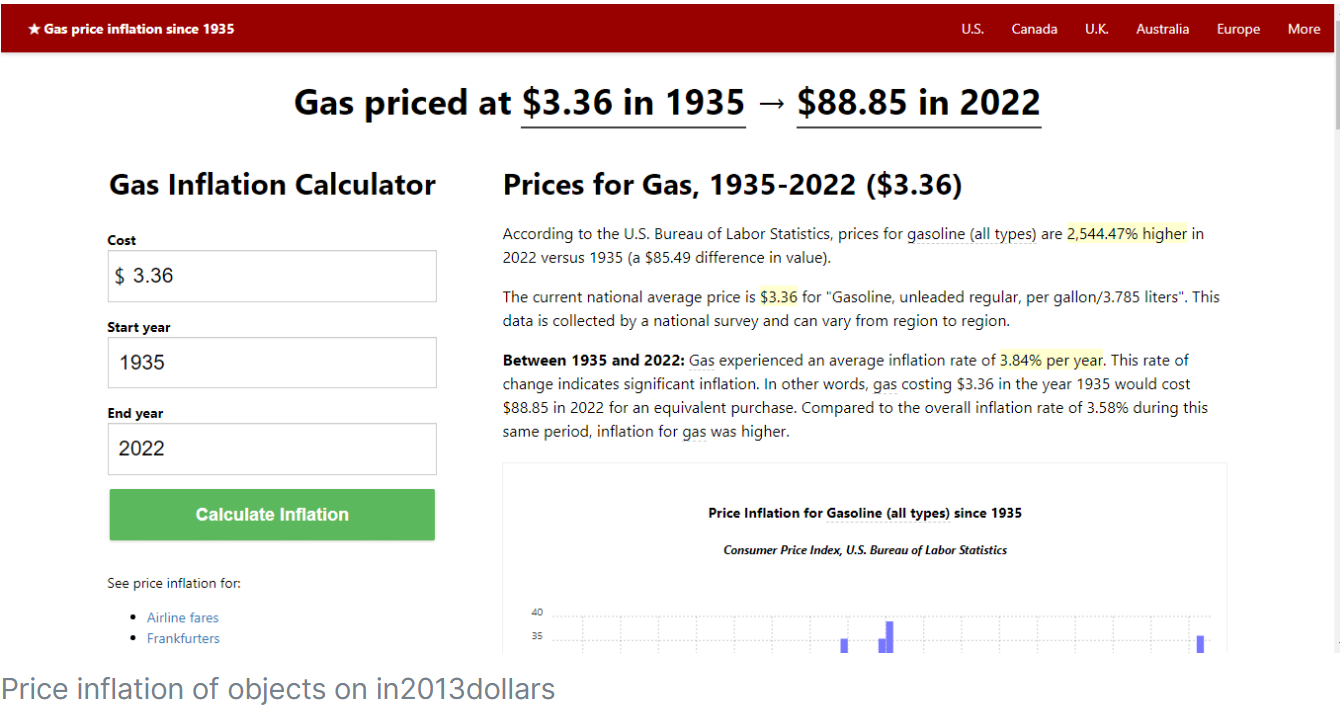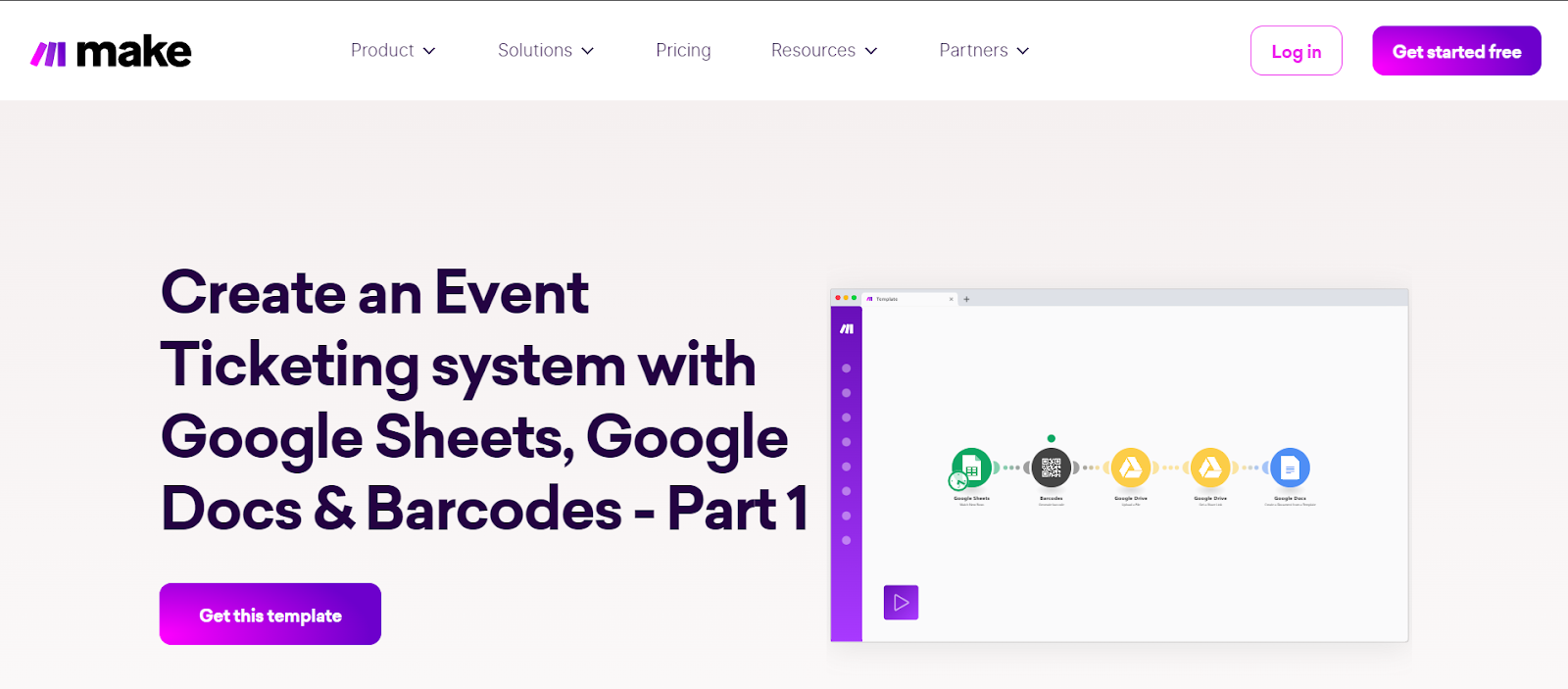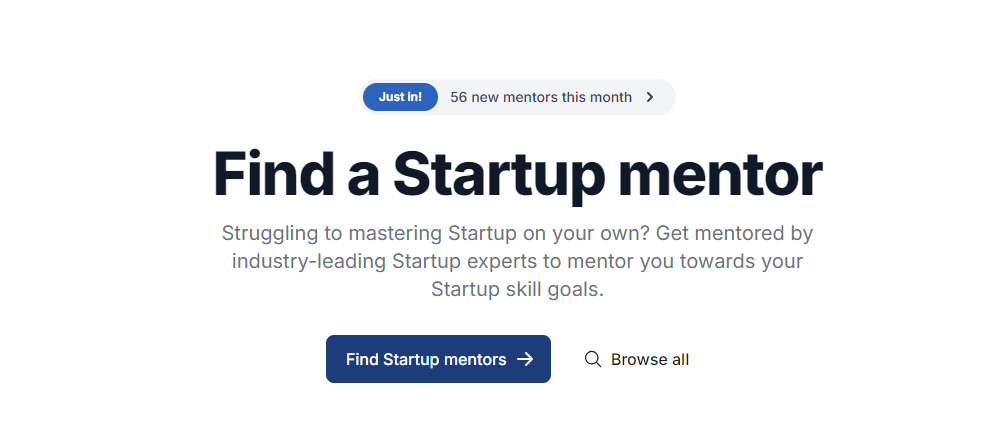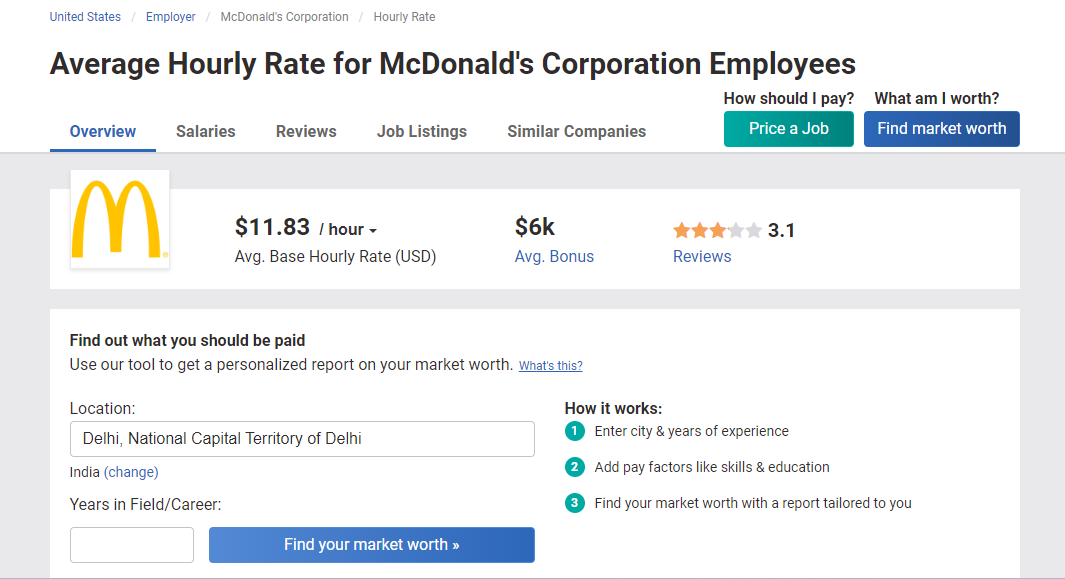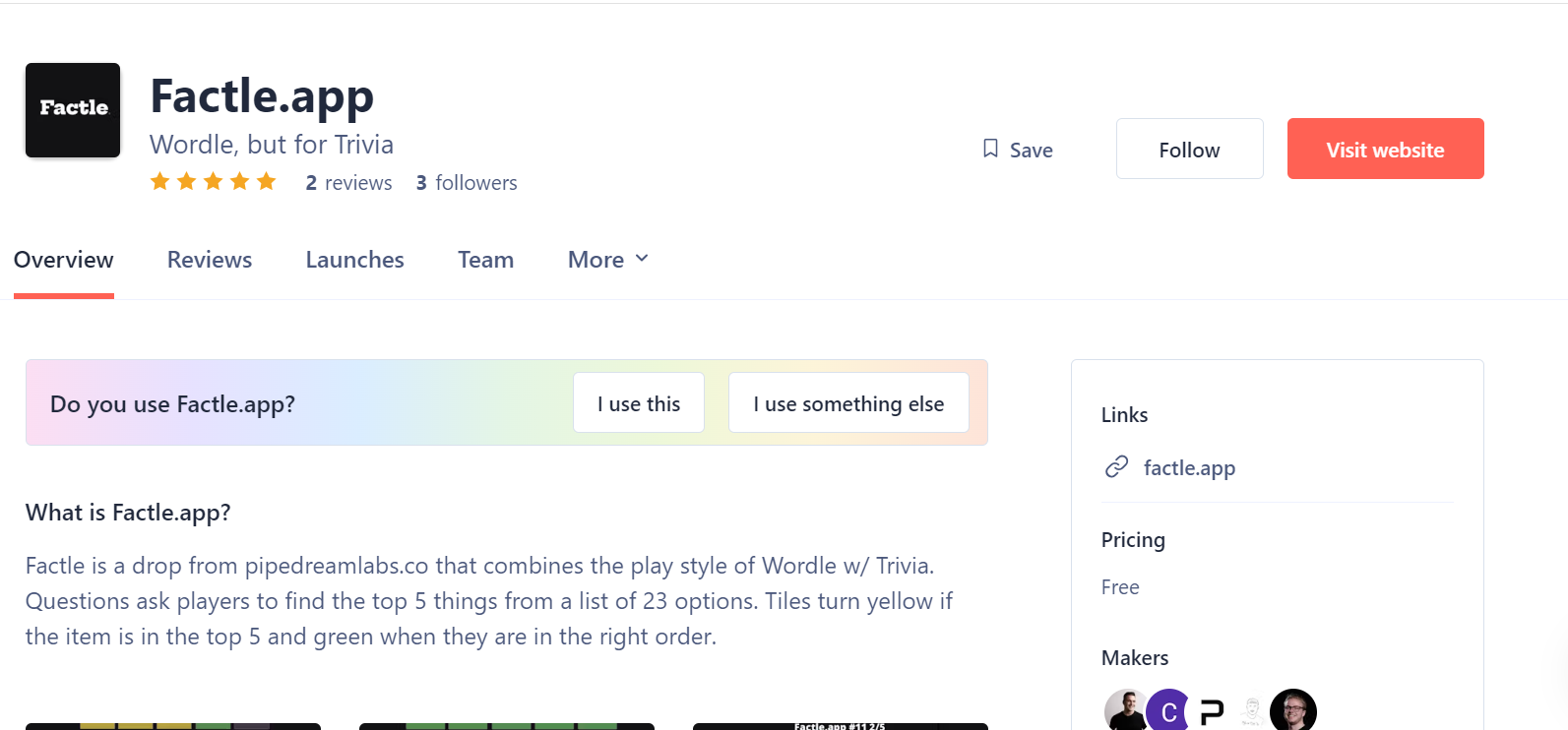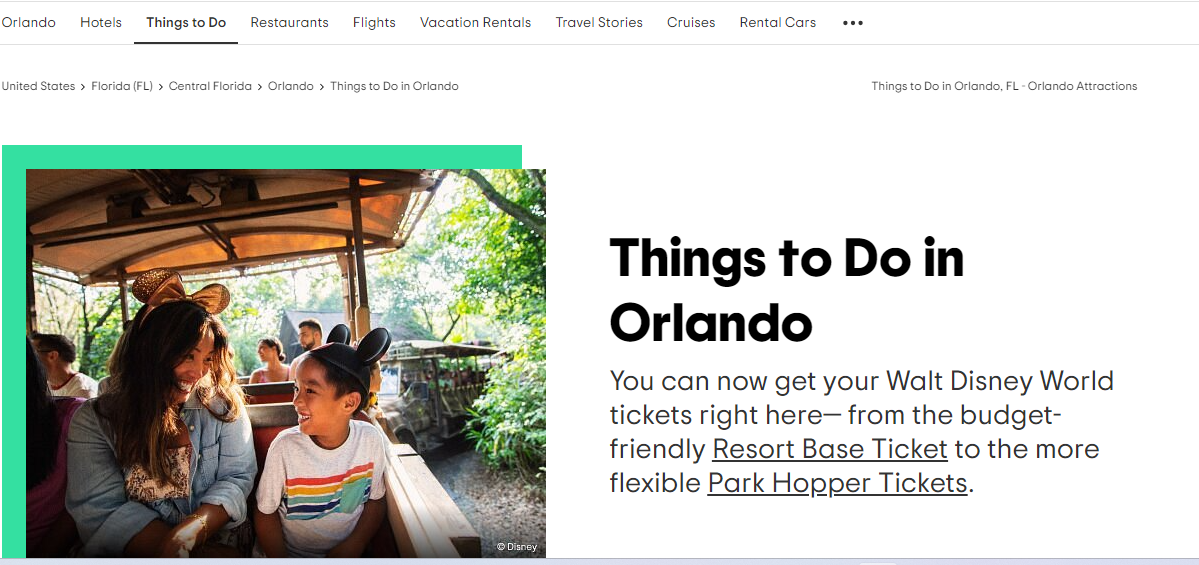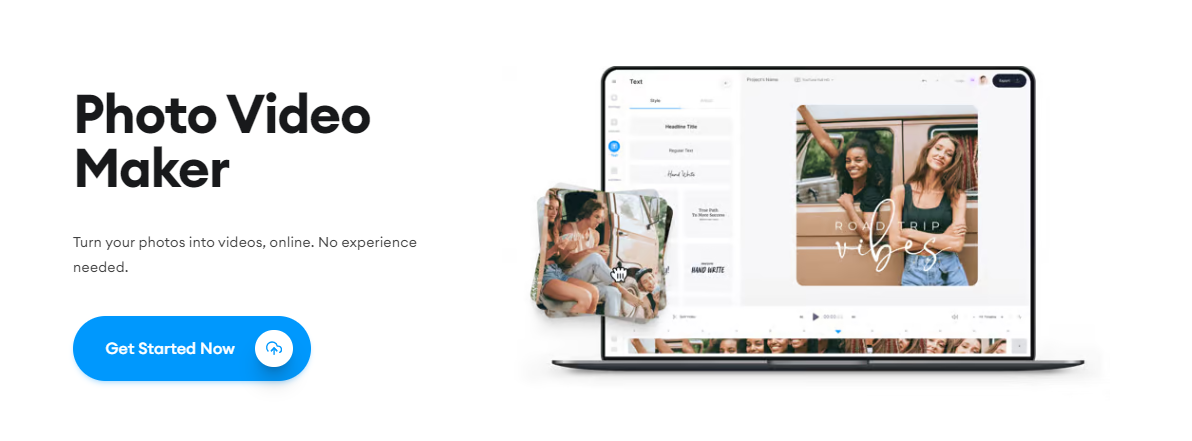Listen to this story
Video Guide: Programmatic SEO to Transform Your Digital Marketing
In the rapidly changing and growing world of search engine optimization (SEO), staying ahead of competitors is essential for companies, digital marketers, and content creators. While effective, traditional SEO methods can be time-consuming and resource-intensive. Enter programmatic SEO, an innovative approach that uses automation and scalability to create thousands of web pages that convert.
You have likely experienced sites like Tripadvisor, Yelp, and Zillow multiple times as an internet user. These websites maintain thousands of content programmatic seo pages at the top of precise search results.
Why? A search engine optimization (SEO) expert or a growth marketing agency such as ours might explain clearly that it’s because of Programmatic SEO.
Still unknown to many, programmatic SEO plays a significant role in digital marketing. As mentioned above, this approach uses automation and data-driven insights to optimize websites with tons of pages efficiently.
This comprehensive guide will explore programmatic SEO, how it works, its benefits, case studies, how you can implement it to boost your online visibility & much more. Let’s dive in.
What Is Programmatic SEO?
Programmatic SEO, sometimes called pSEO, involves creating many landing pages based on a single template to rank on search engine results pages (SERPs). This is particularly beneficial for websites with enormous content, like e-commerce sites or directories.
Each page targets a different low-competition, long-tail keyword, optimizing for organic traffic at scale. Unlike traditional SEO, where content is manually crafted and optimized, programmatic SEO uses automation tools to generate variations of a template-driven page.
The advantage of this approach lies in its increased reliability and speed, resulting in high-quality content that effectively serves your audience. With a greater capacity to address a broader range of topics and queries, there is always a great potential to achieve higher search engine rankings and drive organic traffic.
For instance, if you search for “top hotels in Mumbai,” you will likely find a Tripadvisor page among the top results.
These pages are not created from scratch for every location. However, they are generated programmatically, ensuring a consistent layout while tailoring the content to specific keywords.
Here’s the result for “top hotels in Mumbai”:
And “top hotels in New Delhi”:
Notice that the landing page layout remains consistent while the location and content changes.
Tripadvisor does not create these pages from scratch for each city, state, and country; this is achieved through programmatic SEO.
How Does Programmatic SEO Work?
Programmatic SEO works by combining these key elements:
- Utilizing website templates and databases to produce multiple SEO-optimized pages rather than manually creating each. This strategy allows for the fast publication of hundreds or thousands of pages.
- Targeting low-competition, long-tail keywords with each page to rank for a particular search query. The main objective is to acquire search traffic in niche topic areas.
- Efficiently generate unique page content using existing data, content, and assets. User-generated content (UGC) and business data are frequently utilized.
- Implementing an even page layout, design, and content structure across different pages. A standard landing page template ensures quality and enables automation.
- Focusing pages on transactional, commercial, or informational search intent to drive conversions. Pages aim to attract bottom-of-funnel searchers.
Tripadvisor, Yelp, Zillow, BestParents, Zapier, and numerous other e-commerce platforms extensively make use of programmatic SEO. These sites manage thousands of pages that target hyper-specific searches. The main benefits include the capacity to generate high-quality content at a large scale, effectively target a diverse range of keywords, and increase organic search traffic unprecedentedly.
However, achieving success with programmatic SEO requires strategic planning and careful execution to ensure that pages are unique, valuable, and not perceived as spam by search engines such as Google.
What Is The Difference Between Programmatic SEO And Regular SEO?
While both programmatic and regular SEO aim to increase organic traffic, their methodologies differ significantly:
Regular or traditional SEO involves on-page, off-page & technical seo processes to improve your website’s visibility in search engines (such as Google). It is a long-term strategy that focuses on high-quality content.
A key element of traditional SEO strategy involves manually crafting landing pages and blog posts focused on high-competition keywords. This part differs the most from programmatic SEO.
Programmatic SEO is a much quicker method to achieve the same Google ranking goal. It involves generating multiple landing pages with a consistent layout for search purposes. These landing pages are created using a combination of a database, templates, and an automation strategy.
Unlike traditional SEO, programmatic SEO targets different long-tail keywords across many pages.
| Each task in Regular SEO is generally done manually, requiring substantial time and effort. At the same time, programmatic SEO utilizes the power of automation to complete assigned tasks. |
What Are The Most Important Factors Of Programmatic SEO?
An effective programmatic SEO strategy targets low-competition keywords with high conversion potential. These keywords are then used to develop high-quality landing pages with unique content. Let’s explore the top three factors of Programmatic SEO.
1. Low-Competition Keywords
Programmatic SEO targets keywords with less competition to increase a page’s chances of ranking. For instance, “places to visit in Gujarat” is a low-competition keyword that websites like TripAdvisor aim to target.
These keywords can be identified by assessing the competitiveness of search terms using a metric known as keyword difficulty (KD). You can locate it in the Keyword Overview tool:
Your programmatic SEO project should focus on keywords with a low KD%. Keywords with a KD% from 0–14 are considered “very easy,” while those from 15–29 are classified as “easy” and relatively achievable.
Keywords with higher difficulty typically require a more intensive SEO strategy to compete effectively in the SERPs. Therefore, it is advisable to target keywords with a lower KD% for your pSEO efforts.
2. Search Intent
Search intent directly relates to users’ primary goal when they land on your site. There are four main types of user intent:
- Navigational: Users seeking a specific page (e.g., “Gmail login”).
- Informational: Users aiming to learn more about a topic (e.g., “How upGrowth can help my business grow through growth marketing”).
- Commercial: Users conducting research before making a purchase decision (e.g., “best programmatic SEO tools”).
- Transactional: Users attempting to complete a specific action or purchase (e.g., “buy GoDaddy domain”).
Programmatic SEO generally targets keywords with transactional or commercial search intent. It is most effective for those at the bottom of the marketing funnel who are almost ready to purchase.
Meeting the exact search intent early on your landing page assures visitors that they are in the right place, increasing the probability that they will stay. For instance, a query like “Top Italian restaurants in Pune” yields a Tripadvisor listicle:
Users searching for these keywords are prepared to dine, and Tripadvsior immediately provides options, delivering an excellent user experience.
3. User Experience (UX)
An exceptional user experience is crucial for retaining and converting visitors to your site. However, the automation that facilitates landing page scaling can impact your UX. Therefore, it is imperative to have fast-loading pages with unique and valuable content.
For instance, the software find & review platform G2 maintains thousands of pages with a consistent layout. Have a look at these two different product software pages.
These pages contain extensive information. Nevertheless, everything loads instantly and operates without lag, providing a smooth and enjoyable experience. You can create similar landing pages using programmatic SEO, but it is essential to maintain a high standard of quality.
Utilize automation tools to generate your landing pages and ensure that a human writes or thoroughly edits the content. Employing a landing page template with duplicate AI-generated copy for ranking purposes can result in penalties for low-quality or thin content.
Google refers to these as Doorway pages.
You can prevent this by creating pages with compelling designs and distinctive written content.
What Are The Benefits Of Programmatic SEO?
1. Efficient And Quick Scaling
Programmatic SEO utilizes automation to generate multiple high-quality landing pages quickly and efficiently. This allows for significant scalability in targeting keywords and expanding your online presence. Additionally, you can save time by generating a series of programmatic SEO pages based on a single search query.
Rather than spending hours researching the appropriate keyword for each blog post or individual page, you need to identify a solid keyword to develop programmatic content around.
2. Easy To Scale
Programmatic SEO is not only quick to produce but also easy to scale. Before publishing, there is no need to assign an article to a writer, wait several days for completion, then forward it to an editor, and so forth. Programmatic SEO enables the deployment of thousands of pages within weeks or even days.
Over time, you can continue to add data to your sources, allowing you to create new programmatic pages and update existing ones.
3. Cost-Effective
As mentioned above, hiring writers or editors to create manual content is unnecessary when sourcing content from a database. Consequently, programmatic SEO helps to minimize your cost-per-page. This becomes increasingly advantageous as you generate more programmatic pages around a single head term.
4. Better Competitive Insight
Programmatic SEO tools provide valuable insights into your competitor’s strategies. By analyzing their keywords and landing pages, you can identify gaps in your strategy and make necessary adjustments to improve rankings and conversions. This competitive intelligence allows for a more targeted and effective programmatic SEO approach.
Like large FMCG companies that employ automated tools to optimize production, programmatic SEO tools can enhance search engine visibility. This strategy can provide a competitive edge over manual SEO techniques.
5. Technology Inclusion
While traditional SEO practices can utilize technology to a certain degree, programmatic SEO is naturally technology-driven. It relies extensively on algorithms, AI, and machine learning, allowing SEO professionals to implement broader strategies and uncover untapped potential.
6. The Long-Tail Keyword Advantage
Conventional SEO prioritizes high-volume keywords, which are typically short-tail and highly competitive. Conversely, programmatic SEO, due to its operational scale, facilitates targeting long-tail keywords with lower competition and greater specificity. This strategy results in increased traffic and enhanced conversion rates.
7. Building Useful Links
Links are vital to SEO, and programmatic SEO makes it easier to scale link-building efforts. With thousands of programmatic pages at your disposal, you can use internal linking strategies among your pages to boost their authority and relevance. Additionally, as your online presence grows, more websites will link to your content organically.
8. Ensuring Business Continuity
Creating a vast library of programmatic pages with high-quality content boosts SEO. It provides a backup in case other marketing strategies falter. For instance, if your site experiences a significant drop in traffic due to algorithm updates or lost rankings, the extensive portfolio of programmatic pages can mitigate losses and ensure business continuity.
9. Produce In-Depth Content Quickly.
Programmatic SEO allows for the creation of in-depth, high-quality content at a rapid pace. With automation, you can generate pages with various content formats, such as infographics, videos, and interactive elements, to provide a unique user experience.
This helps to engage visitors and keep them on your site longer, positively impacting SEO metrics like bounce rate and time on page.
10. Get “Quicker” Results.
With programmatic SEO, you can see results faster than traditional SEO methods. Since the process is automated, it takes less time to generate and publish multiple pages than it would with manual content creation. This allows for quicker search engine indexing and faster improvements in rankings and traffic.
What Are Some Best Programmatic SEO Tools?
Programmatic SEO can significantly boost content marketing growth, but its success depends on proper execution. The key is speeding up content production to iterate results quickly, unlike traditional SEO methods that take months.
Here are some top tools to accelerate your Programmatic SEO pages and create content more efficiently:
For No-Code Programmatic SEO
- Engyne
Engyne is a comprehensive platform for Programmatic SEO, aiding in keyword research and content development. It provides writing resources and allows for creating a Programmatic SEO collection with a single-page template and dynamic variables that adapt based on the page title.
For Web Scraping
To start with Programmatic SEO, you need data. For a reliable dataset, extract it from various online sources. These tools help capture text from web pages, eliminating manual copy/paste efforts.
- Bardeen AI
Bardeen excels at data scraping, letting you extract links, texts, and images from a page without coding. Just click on the data you want, and it will automatically find similar elements. This is especially useful for handling long lists with pagination, which is standard on most pages today.
For Keyword Research
Creating high-ranking pages starts with thorough keyword research. Understanding common keywords and Google’s displayed pages (search intent) makes up 85% of the effort.
- Ahrefs
Ahrefs is the market leader in keyword research for SEO marketers. It provides insights like search volume and top search results for your keywords. The “Matching Terms” and “Related Terms” reports help identify keywords you might not have considered.
- Keyword Chef
Ahrefs offers more than just keyword research, which can explain its higher cost. Keyword Chef is recommended for those seeking a budget-friendly tool focused on keyword research. Its wildcard search lets you use * as a placeholder to generate unique ideas with good search volume, aiding in effective planning.
For Programmatic Images
Images enhance a page, but creating them separately can be time-consuming. Here are a few methods to efficiently bulk-create images for your Programmatic SEO pages.
- Tailgraph
Tailgraph offers excellent service for generating hero images for your pages. Use their online dashboard to create a URL that defines the image’s appearance. Add a title, subtitle, and background, and customize fonts and colors to match your brand.
Combine Tailgraph with Google Sheets’ “CONCATENATE” function to efficiently create featured images in bulk.
- Placid.app
While Tailgraph provides a specific image layout, Placid offers complete customization, allowing dynamic insertion of text and logos. Tailgraph and Placid let you create templates with custom elements as placeholders, which can be replaced by sending parameters through the generated URL.
- Screenshot One
Screenshot One is invaluable for online brand curation. It captures website screenshots at any screen size and returns a PNG. You can also delay the capture to ensure the website is fully rendered.
For Page Builders
- WP All Import
WordPress is one of the most powerful website builders. The WP All Import plugin lets you create multiple posts from a data source, usually a CSV file. It’s especially effective for niche sites monetized with Google ads.
For Content Writing
When generating pages programmatically, include at least 800 words to ensure Google takes the page seriously. Below are tools to help you craft engaging content efficiently.
- Rytr
AI text generation improves writing quality. While Google enforces strict policies against directly using AI-generated text for websites, they allow it as a guide. It can enhance your content, rephrase, or elaborate on points.
- Google Sheets
Google Sheets is a popular spreadsheet editor. Data for Programmatic SEO pages is usually in a table format. Use Google Sheets to clean, prepare, and transform this data into a human-readable format.
- Airtable
Airtable is a great modern alternative to Google Sheets. Its intuitive interface uses formulas to calculate data and organize tables. It offers advanced features like collaboration, automation, and customizable views. Plus, it integrates seamlessly with various SaaS tools for easy data import.
- ChatGPT
While Rytr focuses on writing tasks, ChatGPT answers many questions. Need a list of top attractions in India or tools developers use daily? Ask ChatGPT, and you’ll get the information quickly.
Integrating OpenAI’s API with Google Sheets creates an efficient content generation tool that delivers relevant answers faster than a typical search.
For Analytics
Monitoring page traffic, conversion rates, and the keywords driving visitors are critical metrics for any programmatic website. Here is the best tool for analytics.
- Plausible
Plausible is a privacy-focused analytics tool that provides insights into site traffic and its origins. It integrates with Google Search Console to report keywords used. Plausible is highly recommended for a programmatic SEO site.
For Indexing
Publishing pages to the web only guarantees immediate traffic. Google needs to index them for search results. These tools help ensure your pages are technically sound, titles are appropriate, images load quickly, and other vital factors are met.
- HeyMeta
HeyMeta is a reliable SEO tags checker for web pages. Before publishing, verify your titles, descriptions, keywords, and images to ensure they are optimized for Google.
- SEO checker
SEO Checker is an excellent tool for auditing your website and generating a detailed technical report. It checks everything from missing alt text on images to security vulnerabilities.
- IndexMeNow
When you publish your pages, it can take considerable time for Google to index them. IndexMeNow reduces that to just 24 hours. I’ve used it many times and can vouch for its quality.
How To Implement A Programmatic SEO Strategy?
Having clearly understood what programmatic SEO contains and its vast potential, we now delve into the ‘how-to’ phase.
Below is a step-by-step guide to implementing a programmatic SEO strategy:
1. Perform A Strategic Keyword Research
Keywords are the heart of any SEO strategy. Therefore, there is no better place to begin than with thorough keyword research.
- Identify Your Head Terms: Begin by pinpointing short, broad keywords known as head terms. These high-volume keywords are central to your topic and form the foundation of your subsequent keyword research. Tools such as ahrefs & semrush can assist with this task.
- Identify Modifiers and Related Terms: The next step involves identifying words or phrases commonly associated with your head terms. These are your modifiers and related terms. For instance, if your head term is ‘coffee,’ related terms might include ‘arabica,’ ‘roast,’ ‘bean,’ etc.. At the same time, modifiers could be ‘best,’ ‘top,’ or ‘cheap.’
- Select Long-tail Keywords: Finally, identify long-tail keywords that comprise your head terms along with modifiers or related terms. These more specific keywords typically drive better conversions. For example, ‘best arabica coffee beans’ fits into this category.
Please note that programmatic SEO enables targeting a wide range of long-tail keywords, overcoming the limitations of traditional SEO.
2. Build The Content Outline
Next, creating a blueprint by designing your content template is essential. This template should define the format and structure of your future content, including headings, paragraph breaks, and keyword placements.
The architectural design of this template is crucial. It dictates how effectively your content will cater to user intent and align with search engine guidelines.
3. Connect To A Database
Once your content template is established, the next step involves connecting to a reliable database. This is where all the information related to your product or service will be stored for subsequent use. Integrating machine learning and databases is a crucial component of programmatic SEO.
4. Design Your Page Template
Next on the agenda is a page template, which functions as the global layout of your webpage. It serves as the framework of your website, where your content is positioned. Besides accommodating your content, it includes elements such as the website menu, header, footer, and more.
Designing this template with optimal UI/UX principles will enhance your website’s performance for search engines and visitors.
5. Build The Database With Content And Labels
Now, we proceed to integrate and label the content. In this phase, we populate the database with content created based on the content template. During this stage, the system will apply the relevant labels to each content piece, enhancing streamlined content management.
6. Connect The Database To The Website
The next step involves creating an interface between your database and website. This connection is crucial to ensure your web pages are populated with the appropriate content according to your template. Utilizing marketing automation tools can facilitate this connection seamlessly.
7. Publish And Get Indexed
Finally, you are ready to press the Publish button. However, the journey continues. A crucial follow-up step is to ensure that your published content is indexed by search engines.
Automation can be highly effective in this regard. With programmatic SEO, you can submit multiple URLs for crawling, ensuring that search engines promptly recognize your content.
What Are Some Examples Of Programmatic SEO?
1. Canvas Images Builder/Maker Pages
URL: https://www.canva.com/create/logos/
Estimated Pages: 190k
Estimated Monthly Organic Traffic: 100M+
Canvas page builder and logo maker offers templates for thousands of businesses, schools, individuals, and other niches. By creating detailed pages for each niche and industry, they target long-tail keywords, helping them rank high in search engines and drive massive organic traffic to their site.
Read our extensive case study, “How Canva Programmatic SEO Drives 100M+ Monthly Organic Traffic,” to better understand their programmatic SEO strategy.
Watch Our In-Depth Video on Canva’s Programmatic SEO Strategy
2. G2’s Software Comparison Pages
URL: https://www.g2.com/compare/elead-vs-vinsolutions-connect-crm
Approximate Pages: 1M+
Approximate Organic Traffic: 6.6M+
G2 uses programmatic SEO to develop many comparison pages for various software categories. These pages target long-tail keywords and commercial search intent, making them more likely to convert visitors into leads or customers. This strategy has led G2 to gain massive organic traffic numbers and established them as a top player in the software review space.
Read our extensive case study, “How G2’s Programmatic SEO Drives 6.6M+ Monthly Organic Traffic,” to better understand their programmatic SEO strategy.
Watch Our In-Depth Video on G2’s Programmatic SEO Strategy
3. Calendly’s Software Integration Pages
URL: https://calendly.com/integration
Approximate Pages: 6K+
Approximate Organic Traffic: 1.1M+
Calendly, a scheduling software platform employs programmatic SEO to target keywords related to their integrations with popular email and calendar tools. With thousands of landing pages targeting these specific keywords, Calendly has significantly increased its organic traffic and conversions by catering to users’ commercial search intent.
Read our extensive case study, “How Calendly’s Programmatic SEO Drives 1.1M Monthly Organic Traffic,” to better understand their programmatic SEO strategy.
Watch Our In-Depth Video on Calendly’s Programmatic SEO Strategy
4. Delightchat’s Shopify Apps Pages
URL: https://www.delightchat.io/best-shopify-apps
Approximate Pages: 6K+
Approximate Organic Traffic: 11.2K+
Delightchat, a customer support software for Shopify stores, uses programmatic SEO to create pages targeting long-tail keywords related to the best Shopify apps. This approach helps them rank high in search engine results and positions them as an authority in their niche by providing valuable and relevant content to users.
Read our extensive case study, “How Delightchat Programmatic SEO Drives 11.2K+ Monthly Organic Traffic,” to better understand their programmatic SEO strategy.
5. Failory’s Startup Cemetery Pages
URL: https://www.failory.com/graveyard
Approximate Pages: 4.9k+
Approximate Organic Traffic: 103k+
Failory, a platform for failed startup stories and resources, uses programmatic SEO to create pages targeting keywords related to its “Startup Cemetery” section. By targeting users looking for information on failed startups with commercial search intent, Failory has increased its organic traffic and conversions through this unique approach.
Read our extensive case study, “How Failory Programmatic SEO Drives 103k+ Monthly Organic Traffic,” to better understand their programmatic SEO strategy.
Watch Our In-Depth Video on Failory’s Programmatic SEO Strategy
6. In2013dollars Price Inflation Pages
URL: https://www.in2013dollars.com/Gasoline-(all-types)/price-inflation
Approximate Pages: 124k+
Approximate Organic Traffic: 105k+
In2013dollars, a platform for historical price data comparison, uses programmatic SEO to create pages targeting keywords related to price inflation for various products and services. This approach allows them to attract users interested in comparing current prices with past prices, driving organic traffic and establishing themselves as a reliable resource for this information.
Read our extensive case study, “How in2013dollars Programmatic SEO Drives 105K+ Monthly Organic Traffic.” to better understand their programmatic SEO strategy.
Watch Our In-Depth Video on in2013Dollars Programmatic SEO Strategy
7. Kapwing’s Tools Pages
URL: https://www.kapwing.com/video-editor
Approximate Pages: 4300+
Approximate Organic Traffic: 2.2M+
Kapwing, an online video editor and content creation platform, utilizes programmatic SEO to create pages targeting long-tail keywords related to their different editing tools. By providing users with valuable and relevant content, Kapwing has been able to rank high in search engine results and drive a significant amount of organic traffic to their site.
Read our extensive case study, “How Kapwing’s Programmatic SEO Drives 2.2M+ Monthly Organic Traffic.” to better understand their programmatic SEO strategy.
8. Make’s Apps Integration Pages.
URL: https://www.make.com/en/integrations?community=1&verified=1
Approximate Pages: 175K+
Approximate Organic Traffic: 282.9K+
Make, an app development platform uses programmatic SEO to create pages targeting keywords related to its integrations with popular software and tools. By catering to users’ commercial search intent, Make has been able to drive significant organic traffic to its site and increase conversions by showcasing the value and ease of using its integrated apps.
Read our extensive case study, “How To Make Programmatic SEO Drives 282.9K+ Monthly Organic Traffic,” to better understand their programmatic SEO strategy.
9. Mentorcruise’s Find a Coach Pages
URL: https://mentorcruise.com/coach/career/
Approximate Pages: 17K+
Approximate Organic Traffic: 44.5K+
Mentorcruise, an online platform connecting mentees with mentors for career guidance and coaching, utilizes programmatic SEO to create pages targeting keywords related to finding a coach for specific careers. This approach allows them to attract users looking for personalized mentorship opportunities and drive organic traffic by providing valuable and relevant content.
Read our extensive case study, “How MentorCruise Programmatic SEO Drives 44.5K+ Monthly Organic Traffic,” to better understand their programmatic SEO strategy.
10. moveBuddha’s Moving Company Pages
URL: https://www.movebuddha.com/movers/
Approximate Pages: 45K+
Approximate Organic Traffic: 70K+
moveBuddha, an online marketplace for comparing and booking moving services, uses programmatic SEO to create pages targeting keywords related to different moving companies. By catering to users’ commercial search intent, moveBuddha has driven significant organic traffic and conversions by providing valuable information about various options available for their specific moving needs.
Read our extensive case study, “How moveBuddha Programmatic SEO Drives 70K+ Monthly Organic Traffic,” to better understand their programmatic SEO strategy.
Watch Our In-Depth Video on moveBuddha Programmatic SEO Strategy
11. Payscale’s Hourly Rate Pages
URL: http://luxemg.lnkiy.in/payscale
Approximate Pages: 2 M+
Approximate Organic Traffic: 1.3M
Payscale, a salary and compensation data platform, uses programmatic SEO to create pages targeting keywords related to hourly rates for different job positions. By providing users with valuable and relevant information about wages in specific industries and companies, Payscale has been able to drive a significant amount of organic traffic and establish itself as a reliable source for this data type.
Read our extensive case study, “How Payscale Programmatic SEO Drives 1.3 M+ Monthly Organic Traffic,” to better understand their programmatic SEO strategy.
12. Product Hunt’s Product profile pages
URL: https://www.producthunt.com/products/ariavpn
Approximate Pages: 515K
Approximate Organic Traffic: 792K+
Product Hunt, a popular platform for discovering and discussing new products, uses programmatic SEO to create pages targeting keywords related to specific product profiles. This approach allows them to attract users interested in learning more about a product and drive organic traffic by providing comprehensive information and user reviews.
Read our extensive case study, “How Product Hunt Programmatic SEO Drives 792K+ Monthly Organic Traffic,” to better understand their programmatic SEO strategy.
13. Tripadvisor’s Things to Do Pages
URL: https://www.tripadvisor.com/Attractions-g153339-Activities-Canada.html
Approximate Pages: 74M+
Approximate Organic Traffic: 200M+
Tripadvisor, a popular travel website, uses programmatic SEO to create pages targeting keywords related to things to do in different destinations. By providing users with valuable and comprehensive information about activities and attractions in specific locations, TripAdvisor has been able to rank high in search engine results and drive a significant amount of organic traffic to their site.
Read our extensive case study, “How Tripadvisor’s Programmatic SEO Drives 200M+ Monthly Organic Traffic,” to better understand their programmatic SEO strategy.
14. Veed’s Tool Pages
URL: https://www.veed.io/tools
Approximate Pages: 12k+
Approximate Organic Traffic: 3.5M+
Veed, an online video editing tool, uses programmatic SEO to create pages targeting keywords related to different features and tools offered on their platform. By catering to users’ search intent for specific functionalities, Veed has driven organic traffic and conversions by showcasing the value and ease of using their tool.
Read our extensive case study, “How Veeds Programmatic SEO Delivers 3.5M+ Monthly Organic Traffic,” to better understand their programmatic SEO strategy.
Watch Our In-Depth Video on Veeds Programmatic SEO Strategy
15. Wise Currency Converter Pages
URL: https://wise.com/in/currency-converter/
Approximate Pages: 90M+
Approximate Organic Traffic: 92M+
Wise, a popular online currency converter and money transfer platform, uses programmatic SEO to create pages targeting keywords related to currencies and exchange rates. By providing users with accurate and up-to-date information about conversion rates, Wise has been able to rank high in search engine results and drive a significant amount of organic traffic to their site.
Read our extensive case study, “How Wise Programmatic SEO Drives 90M+ Monthly Organic Traffic,” to better understand their programmatic SEO strategy.
Watch Our In-Depth Video on Wise Programmatic SEO Strategy
16. Zapier’s App Pages
Approximate Pages: 500K+
Approximate Organic Traffic: 2.6M+
Zapier, an online automation tool, uses programmatic SEO to create pages targeting keywords related to different apps and integrations on their platform. By catering to users’ search intent for specific functions, Zapier has driven organic traffic and conversions by showcasing the value and ease of using their app in various workflows.
Read our extensive case study, “How Zapier Programmatic SEO Drives 2.6M+ Monthly Organic Traffic,” to better understand their programmatic SEO strategy.
Watch Our In-Depth Video on Zapier Programmatic SEO Strategy
Programmatic SEO: A Game Changer with upGrowth
The Significance of Programmatic SEO
Programmatic SEO, a core focus at upGrowth, revolutionizes how businesses can scale organic traffic through automation and data-driven strategies. By focusing on high-volume, intent-based keywords, upGrowth empowers brands to achieve sustained growth in organic reach. Our approach not only optimizes content generation but also enhances user engagement and conversion rates.
The Interplay Between SEO and Social Media
In the evolving landscape of digital marketing, SEO and social media must work in tandem. While SEO attracts long-term organic traffic, social media amplifies reach, driving short-term engagement. Together, they create a holistic strategy where social interactions fuel search engine visibility, and optimized content gains more exposure through shares and interactions.
Providing Diverse Content Formats
To cater to varied user preferences and enhance SEO value, upGrowth’s content strategy integrates articles, calculators, quizzes, and guest blogging opportunities. This diversity not only improves user engagement but also increases the website’s topical authority, allowing it to rank for a wider range of keywords and attract a broader audience.
Real-World Case Studies
At upGrowth, we understand the power of programmatic SEO to drive significant traffic growth. Through case studies like Zapier and Yelp—websites that have successfully leveraged programmatic SEO to skyrocket their organic traffic—we demonstrate how these strategies work in real-world applications. These examples highlight the potential for businesses to scale organic reach. Our approach tailors similar programmatic SEO strategies to suit the unique needs of our clients, ensuring sustainable growth.
Value Proposition: “Unlock the Potential of Data-Driven Growth”
upGrowth its commitment to empowering businesses through data-driven insights. This promise of measurable, actionable growth resonates with companies seeking results-focused digital marketing strategies, making it clear that upGrowth stands for sustainable, scalable success driven by analytics.
Final Words – Boost Your Online Visibility With Programmatic SEO
Programmatic SEO offers a robust, efficient, and scalable approach to improving your website’s organic traffic and conversion rates. By leveraging low-competition keywords, understanding search intent, and maintaining a high standard of user experience, you can create valuable content at scale and stay ahead of the competition.
As digital marketing evolves, programmatic SEO will become an essential strategy for businesses looking to enhance online visibility and drive growth.
In conclusion, programmatic SEO should be considered as a strategic map. It provides essential insights, navigates complex paths, and directs you toward your SEO objectives.
Ready to enhance your SEO? Bookmark upGrowth’s blogs today and begin exploring the potential of programmatic SEO.
Our comprehensive guides and expert insights will help you understand and implement advanced strategies to boost your online visibility and drive more traffic to your website.
Delve into a wealth of information designed to advance your SEO efforts!
Glossary of Key Terms
- Programmatic SEO: A scalable SEO strategy that uses automation and code to create large volumes of landing pages targeting specific keywords.
- SEO (Search Engine Optimization): The practice of optimizing a website to improve its ranking in search engine results pages (SERPs) and attract organic traffic.
- Organic Traffic: Website visitors who arrive at a website through unpaid search engine results, as opposed to paid advertising.
- PPC (Pay-Per-Click): An advertising model where advertisers pay a fee each time a user clicks on one of their online ads.
- Social Media Marketing: Utilizing social media platforms to connect with audiences, build brand awareness, drive website traffic, and generate leads.
- Content Hub: A centralized online resource containing valuable and relevant content organized around a specific topic or theme.
- Growth Hacking: A data-driven approach to marketing that focuses on rapid experimentation and innovative strategies to achieve significant growth.
- Go-to-Market Strategy: A comprehensive plan outlining how a company will introduce a new product or service to the market and reach its target customers.
- Data-Driven Growth: A business strategy that relies on data analysis and insights to inform decision-making and fuel growth initiatives.
For instance, if you search for “top hotels in Mumbai,” you will likely find a Tripadvisor page among the top results.
These pages are not created from scratch for every location. However, they are generated programmatically, ensuring a consistent layout while tailoring the content to specific keywords.
Here’s the result for “top hotels in Mumbai”:
And “top hotels in New Delhi”:
Notice that the landing page layout remains consistent while the location and content changes.
Tripadvisor does not create these pages from scratch for each city, state, and country; this is achieved through programmatic SEO.
How Does Programmatic SEO Work?
Programmatic SEO works by combining these key elements:
- Utilizing website templates and databases to produce multiple SEO-optimized pages rather than manually creating each. This strategy allows for the fast publication of hundreds or thousands of pages.
- Targeting low-competition, long-tail keywords with each page to rank for a particular search query. The main objective is to acquire search traffic in niche topic areas.
- Efficiently generate unique page content using existing data, content, and assets. User-generated content (UGC) and business data are frequently utilized.
- Implementing an even page layout, design, and content structure across different pages. A standard landing page template ensures quality and enables automation.
- Focusing pages on transactional, commercial, or informational search intent to drive conversions. Pages aim to attract bottom-of-funnel searchers.
Tripadvisor, Yelp, Zillow, BestParents, Zapier, and numerous other e-commerce platforms extensively make use of programmatic SEO. These sites manage thousands of pages that target hyper-specific searches. The main benefits include the capacity to generate high-quality content at a large scale, effectively target a diverse range of keywords, and increase organic search traffic unprecedentedly.
However, achieving success with programmatic SEO requires strategic planning and careful execution to ensure that pages are unique, valuable, and not perceived as spam by search engines such as Google.
What Is The Difference Between Programmatic SEO And Regular SEO?
While both programmatic and regular SEO aim to increase organic traffic, their methodologies differ significantly:
Regular or traditional SEO involves on-page, off-page & technical seo processes to improve your website’s visibility in search engines (such as Google). It is a long-term strategy that focuses on high-quality content.
A key element of traditional SEO strategy involves manually crafting landing pages and blog posts focused on high-competition keywords. This part differs the most from programmatic SEO.
Programmatic SEO is a much quicker method to achieve the same Google ranking goal. It involves generating multiple landing pages with a consistent layout for search purposes. These landing pages are created using a combination of a database, templates, and an automation strategy.
Unlike traditional SEO, programmatic SEO targets different long-tail keywords across many pages.
| Each task in Regular SEO is generally done manually, requiring substantial time and effort. At the same time, programmatic SEO utilizes the power of automation to complete assigned tasks. |
What Are The Most Important Factors Of Programmatic SEO?
An effective programmatic SEO strategy targets low-competition keywords with high conversion potential. These keywords are then used to develop high-quality landing pages with unique content. Let’s explore the top three factors of Programmatic SEO.
1. Low-Competition Keywords
Programmatic SEO targets keywords with less competition to increase a page’s chances of ranking. For instance, “places to visit in Gujarat” is a low-competition keyword that websites like TripAdvisor aim to target.
These keywords can be identified by assessing the competitiveness of search terms using a metric known as keyword difficulty (KD). You can locate it in the Keyword Overview tool:
Your programmatic SEO project should focus on keywords with a low KD%. Keywords with a KD% from 0–14 are considered “very easy,” while those from 15–29 are classified as “easy” and relatively achievable.
Keywords with higher difficulty typically require a more intensive SEO strategy to compete effectively in the SERPs. Therefore, it is advisable to target keywords with a lower KD% for your pSEO efforts.
2. Search Intent
Search intent directly relates to users’ primary goal when they land on your site. There are four main types of user intent:
- Navigational: Users seeking a specific page (e.g., “Gmail login”).
- Informational: Users aiming to learn more about a topic (e.g., “How upGrowth can help my business grow through growth marketing”).
- Commercial: Users conducting research before making a purchase decision (e.g., “best programmatic SEO tools”).
- Transactional: Users attempting to complete a specific action or purchase (e.g., “buy GoDaddy domain”).
Programmatic SEO generally targets keywords with transactional or commercial search intent. It is most effective for those at the bottom of the marketing funnel who are almost ready to purchase.
Meeting the exact search intent early on your landing page assures visitors that they are in the right place, increasing the probability that they will stay. For instance, a query like “Top Italian restaurants in Pune” yields a Tripadvisor listicle:
Users searching for these keywords are prepared to dine, and Tripadvsior immediately provides options, delivering an excellent user experience.
3. User Experience (UX)
An exceptional user experience is crucial for retaining and converting visitors to your site. However, the automation that facilitates landing page scaling can impact your UX. Therefore, it is imperative to have fast-loading pages with unique and valuable content.
For instance, the software find & review platform G2 maintains thousands of pages with a consistent layout. Have a look at these two different product software pages.
These pages contain extensive information. Nevertheless, everything loads instantly and operates without lag, providing a smooth and enjoyable experience. You can create similar landing pages using programmatic SEO, but it is essential to maintain a high standard of quality.
Utilize automation tools to generate your landing pages and ensure that a human writes or thoroughly edits the content. Employing a landing page template with duplicate AI-generated copy for ranking purposes can result in penalties for low-quality or thin content.
Google refers to these as Doorway pages.
You can prevent this by creating pages with compelling designs and distinctive written content.
What Are The Benefits Of Programmatic SEO?
1. Efficient And Quick Scaling
Programmatic SEO utilizes automation to generate multiple high-quality landing pages quickly and efficiently. This allows for significant scalability in targeting keywords and expanding your online presence. Additionally, you can save time by generating a series of programmatic SEO pages based on a single search query.
Rather than spending hours researching the appropriate keyword for each blog post or individual page, you need to identify a solid keyword to develop programmatic content around.
2. Easy To Scale
Programmatic SEO is not only quick to produce but also easy to scale. Before publishing, there is no need to assign an article to a writer, wait several days for completion, then forward it to an editor, and so forth. Programmatic SEO enables the deployment of thousands of pages within weeks or even days.
Over time, you can continue to add data to your sources, allowing you to create new programmatic pages and update existing ones.
3. Cost-Effective
As mentioned above, hiring writers or editors to create manual content is unnecessary when sourcing content from a database. Consequently, programmatic SEO helps to minimize your cost-per-page. This becomes increasingly advantageous as you generate more programmatic pages around a single head term.
4. Better Competitive Insight
Programmatic SEO tools provide valuable insights into your competitor’s strategies. By analyzing their keywords and landing pages, you can identify gaps in your strategy and make necessary adjustments to improve rankings and conversions. This competitive intelligence allows for a more targeted and effective programmatic SEO approach.
Like large FMCG companies that employ automated tools to optimize production, programmatic SEO tools can enhance search engine visibility. This strategy can provide a competitive edge over manual SEO techniques.
5. Technology Inclusion
While traditional SEO practices can utilize technology to a certain degree, programmatic SEO is naturally technology-driven. It relies extensively on algorithms, AI, and machine learning, allowing SEO professionals to implement broader strategies and uncover untapped potential.
6. The Long-Tail Keyword Advantage
Conventional SEO prioritizes high-volume keywords, which are typically short-tail and highly competitive. Conversely, programmatic SEO, due to its operational scale, facilitates targeting long-tail keywords with lower competition and greater specificity. This strategy results in increased traffic and enhanced conversion rates.
7. Building Useful Links
Links are vital to SEO, and programmatic SEO makes it easier to scale link-building efforts. With thousands of programmatic pages at your disposal, you can use internal linking strategies among your pages to boost their authority and relevance. Additionally, as your online presence grows, more websites will link to your content organically.
8. Ensuring Business Continuity
Creating a vast library of programmatic pages with high-quality content boosts SEO. It provides a backup in case other marketing strategies falter. For instance, if your site experiences a significant drop in traffic due to algorithm updates or lost rankings, the extensive portfolio of programmatic pages can mitigate losses and ensure business continuity.
9. Produce In-Depth Content Quickly.
Programmatic SEO allows for the creation of in-depth, high-quality content at a rapid pace. With automation, you can generate pages with various content formats, such as infographics, videos, and interactive elements, to provide a unique user experience.
This helps to engage visitors and keep them on your site longer, positively impacting SEO metrics like bounce rate and time on page.
10. Get “Quicker” Results.
With programmatic SEO, you can see results faster than traditional SEO methods. Since the process is automated, it takes less time to generate and publish multiple pages than it would with manual content creation. This allows for quicker search engine indexing and faster improvements in rankings and traffic.
What Are Some Best Programmatic SEO Tools?
Programmatic SEO can significantly boost content marketing growth, but its success depends on proper execution. The key is speeding up content production to iterate results quickly, unlike traditional SEO methods that take months.
Here are some top tools to accelerate your Programmatic SEO pages and create content more efficiently:
For No-Code Programmatic SEO
- Engyne
Engyne is a comprehensive platform for Programmatic SEO, aiding in keyword research and content development. It provides writing resources and allows for creating a Programmatic SEO collection with a single-page template and dynamic variables that adapt based on the page title.
For Web Scraping
To start with Programmatic SEO, you need data. For a reliable dataset, extract it from various online sources. These tools help capture text from web pages, eliminating manual copy/paste efforts.
- Bardeen AI
Bardeen excels at data scraping, letting you extract links, texts, and images from a page without coding. Just click on the data you want, and it will automatically find similar elements. This is especially useful for handling long lists with pagination, which is standard on most pages today.
For Keyword Research
Creating high-ranking pages starts with thorough keyword research. Understanding common keywords and Google’s displayed pages (search intent) makes up 85% of the effort.
- Ahrefs
Ahrefs is the market leader in keyword research for SEO marketers. It provides insights like search volume and top search results for your keywords. The “Matching Terms” and “Related Terms” reports help identify keywords you might not have considered.
- Keyword Chef
Ahrefs offers more than just keyword research, which can explain its higher cost. Keyword Chef is recommended for those seeking a budget-friendly tool focused on keyword research. Its wildcard search lets you use * as a placeholder to generate unique ideas with good search volume, aiding in effective planning.
For Programmatic Images
Images enhance a page, but creating them separately can be time-consuming. Here are a few methods to efficiently bulk-create images for your Programmatic SEO pages.
- Tailgraph
Tailgraph offers excellent service for generating hero images for your pages. Use their online dashboard to create a URL that defines the image’s appearance. Add a title, subtitle, and background, and customize fonts and colors to match your brand.
Combine Tailgraph with Google Sheets’ “CONCATENATE” function to efficiently create featured images in bulk.
- Placid.app
While Tailgraph provides a specific image layout, Placid offers complete customization, allowing dynamic insertion of text and logos. Tailgraph and Placid let you create templates with custom elements as placeholders, which can be replaced by sending parameters through the generated URL.
- Screenshot One
Screenshot One is invaluable for online brand curation. It captures website screenshots at any screen size and returns a PNG. You can also delay the capture to ensure the website is fully rendered.
For Page Builders
- WP All Import
WordPress is one of the most powerful website builders. The WP All Import plugin lets you create multiple posts from a data source, usually a CSV file. It’s especially effective for niche sites monetized with Google ads.
For Content Writing
When generating pages programmatically, include at least 800 words to ensure Google takes the page seriously. Below are tools to help you craft engaging content efficiently.
- Rytr
AI text generation improves writing quality. While Google enforces strict policies against directly using AI-generated text for websites, they allow it as a guide. It can enhance your content, rephrase, or elaborate on points.
- Google Sheets
Google Sheets is a popular spreadsheet editor. Data for Programmatic SEO pages is usually in a table format. Use Google Sheets to clean, prepare, and transform this data into a human-readable format.
- Airtable
Airtable is a great modern alternative to Google Sheets. Its intuitive interface uses formulas to calculate data and organize tables. It offers advanced features like collaboration, automation, and customizable views. Plus, it integrates seamlessly with various SaaS tools for easy data import.
- ChatGPT
While Rytr focuses on writing tasks, ChatGPT answers many questions. Need a list of top attractions in India or tools developers use daily? Ask ChatGPT, and you’ll get the information quickly.
Integrating OpenAI’s API with Google Sheets creates an efficient content generation tool that delivers relevant answers faster than a typical search.
For Analytics
Monitoring page traffic, conversion rates, and the keywords driving visitors are critical metrics for any programmatic website. Here is the best tool for analytics.
- Plausible
Plausible is a privacy-focused analytics tool that provides insights into site traffic and its origins. It integrates with Google Search Console to report keywords used. Plausible is highly recommended for a programmatic SEO site.
For Indexing
Publishing pages to the web only guarantees immediate traffic. Google needs to index them for search results. These tools help ensure your pages are technically sound, titles are appropriate, images load quickly, and other vital factors are met.
- HeyMeta
HeyMeta is a reliable SEO tags checker for web pages. Before publishing, verify your titles, descriptions, keywords, and images to ensure they are optimized for Google.
- SEO checker
SEO Checker is an excellent tool for auditing your website and generating a detailed technical report. It checks everything from missing alt text on images to security vulnerabilities.
- IndexMeNow
When you publish your pages, it can take considerable time for Google to index them. IndexMeNow reduces that to just 24 hours. I’ve used it many times and can vouch for its quality.
How To Implement A Programmatic SEO Strategy?
Having clearly understood what programmatic SEO contains and its vast potential, we now delve into the ‘how-to’ phase.
Below is a step-by-step guide to implementing a programmatic SEO strategy:
1. Perform A Strategic Keyword Research
Keywords are the heart of any SEO strategy. Therefore, there is no better place to begin than with thorough keyword research.
- Identify Your Head Terms: Begin by pinpointing short, broad keywords known as head terms. These high-volume keywords are central to your topic and form the foundation of your subsequent keyword research. Tools such as ahrefs & semrush can assist with this task.
- Identify Modifiers and Related Terms: The next step involves identifying words or phrases commonly associated with your head terms. These are your modifiers and related terms. For instance, if your head term is ‘coffee,’ related terms might include ‘arabica,’ ‘roast,’ ‘bean,’ etc.. At the same time, modifiers could be ‘best,’ ‘top,’ or ‘cheap.’
- Select Long-tail Keywords: Finally, identify long-tail keywords that comprise your head terms along with modifiers or related terms. These more specific keywords typically drive better conversions. For example, ‘best arabica coffee beans’ fits into this category.
Please note that programmatic SEO enables targeting a wide range of long-tail keywords, overcoming the limitations of traditional SEO.
2. Build The Content Outline
Next, creating a blueprint by designing your content template is essential. This template should define the format and structure of your future content, including headings, paragraph breaks, and keyword placements.
The architectural design of this template is crucial. It dictates how effectively your content will cater to user intent and align with search engine guidelines.
3. Connect To A Database
Once your content template is established, the next step involves connecting to a reliable database. This is where all the information related to your product or service will be stored for subsequent use. Integrating machine learning and databases is a crucial component of programmatic SEO.
4. Design Your Page Template
Next on the agenda is a page template, which functions as the global layout of your webpage. It serves as the framework of your website, where your content is positioned. Besides accommodating your content, it includes elements such as the website menu, header, footer, and more.
Designing this template with optimal UI/UX principles will enhance your website’s performance for search engines and visitors.
5. Build The Database With Content And Labels
Now, we proceed to integrate and label the content. In this phase, we populate the database with content created based on the content template. During this stage, the system will apply the relevant labels to each content piece, enhancing streamlined content management.
6. Connect The Database To The Website
The next step involves creating an interface between your database and website. This connection is crucial to ensure your web pages are populated with the appropriate content according to your template. Utilizing marketing automation tools can facilitate this connection seamlessly.
7. Publish And Get Indexed
Finally, you are ready to press the Publish button. However, the journey continues. A crucial follow-up step is to ensure that your published content is indexed by search engines.
Automation can be highly effective in this regard. With programmatic SEO, you can submit multiple URLs for crawling, ensuring that search engines promptly recognize your content.
What Are Some Examples Of Programmatic SEO?
1. Canvas Images Builder/Maker Pages
URL: https://www.canva.com/create/logos/
Estimated Pages: 190k
Estimated Monthly Organic Traffic: 100M+
Canvas page builder and logo maker offers templates for thousands of businesses, schools, individuals, and other niches. By creating detailed pages for each niche and industry, they target long-tail keywords, helping them rank high in search engines and drive massive organic traffic to their site.
Read our extensive case study, “How Canva Programmatic SEO Drives 100M+ Monthly Organic Traffic,” to better understand their programmatic SEO strategy.
Watch Our In-Depth Video on Canva’s Programmatic SEO Strategy
2. G2’s Software Comparison Pages
URL: https://www.g2.com/compare/elead-vs-vinsolutions-connect-crm
Approximate Pages: 1M+
Approximate Organic Traffic: 6.6M+
G2 uses programmatic SEO to develop many comparison pages for various software categories. These pages target long-tail keywords and commercial search intent, making them more likely to convert visitors into leads or customers. This strategy has led G2 to gain massive organic traffic numbers and established them as a top player in the software review space.
Read our extensive case study, “How G2’s Programmatic SEO Drives 6.6M+ Monthly Organic Traffic,” to better understand their programmatic SEO strategy.
Watch Our In-Depth Video on G2’s Programmatic SEO Strategy
3. Calendly’s Software Integration Pages
URL: https://calendly.com/integration
Approximate Pages: 6K+
Approximate Organic Traffic: 1.1M+
Calendly, a scheduling software platform employs programmatic SEO to target keywords related to their integrations with popular email and calendar tools. With thousands of landing pages targeting these specific keywords, Calendly has significantly increased its organic traffic and conversions by catering to users’ commercial search intent.
Read our extensive case study, “How Calendly’s Programmatic SEO Drives 1.1M Monthly Organic Traffic,” to better understand their programmatic SEO strategy.
Watch Our In-Depth Video on Calendly’s Programmatic SEO Strategy
4. Delightchat’s Shopify Apps Pages
URL: https://www.delightchat.io/best-shopify-apps
Approximate Pages: 6K+
Approximate Organic Traffic: 11.2K+
Delightchat, a customer support software for Shopify stores, uses programmatic SEO to create pages targeting long-tail keywords related to the best Shopify apps. This approach helps them rank high in search engine results and positions them as an authority in their niche by providing valuable and relevant content to users.
Read our extensive case study, “How Delightchat Programmatic SEO Drives 11.2K+ Monthly Organic Traffic,” to better understand their programmatic SEO strategy.
5. Failory’s Startup Cemetery Pages
URL: https://www.failory.com/graveyard
Approximate Pages: 4.9k+
Approximate Organic Traffic: 103k+
Failory, a platform for failed startup stories and resources, uses programmatic SEO to create pages targeting keywords related to its “Startup Cemetery” section. By targeting users looking for information on failed startups with commercial search intent, Failory has increased its organic traffic and conversions through this unique approach.
Read our extensive case study, “How Failory Programmatic SEO Drives 103k+ Monthly Organic Traffic,” to better understand their programmatic SEO strategy.
Watch Our In-Depth Video on Failory’s Programmatic SEO Strategy
6. In2013dollars Price Inflation Pages
URL: https://www.in2013dollars.com/Gasoline-(all-types)/price-inflation
Approximate Pages: 124k+
Approximate Organic Traffic: 105k+
In2013dollars, a platform for historical price data comparison, uses programmatic SEO to create pages targeting keywords related to price inflation for various products and services. This approach allows them to attract users interested in comparing current prices with past prices, driving organic traffic and establishing themselves as a reliable resource for this information.
Read our extensive case study, “How in2013dollars Programmatic SEO Drives 105K+ Monthly Organic Traffic.” to better understand their programmatic SEO strategy.
Watch Our In-Depth Video on in2013Dollars Programmatic SEO Strategy
7. Kapwing’s Tools Pages
URL: https://www.kapwing.com/video-editor
Approximate Pages: 4300+
Approximate Organic Traffic: 2.2M+
Kapwing, an online video editor and content creation platform, utilizes programmatic SEO to create pages targeting long-tail keywords related to their different editing tools. By providing users with valuable and relevant content, Kapwing has been able to rank high in search engine results and drive a significant amount of organic traffic to their site.
Read our extensive case study, “How Kapwing’s Programmatic SEO Drives 2.2M+ Monthly Organic Traffic.” to better understand their programmatic SEO strategy.
8. Make’s Apps Integration Pages.
URL: https://www.make.com/en/integrations?community=1&verified=1
Approximate Pages: 175K+
Approximate Organic Traffic: 282.9K+
Make, an app development platform uses programmatic SEO to create pages targeting keywords related to its integrations with popular software and tools. By catering to users’ commercial search intent, Make has been able to drive significant organic traffic to its site and increase conversions by showcasing the value and ease of using its integrated apps.
Read our extensive case study, “How To Make Programmatic SEO Drives 282.9K+ Monthly Organic Traffic,” to better understand their programmatic SEO strategy.
9. Mentorcruise’s Find a Coach Pages
URL: https://mentorcruise.com/coach/career/
Approximate Pages: 17K+
Approximate Organic Traffic: 44.5K+
Mentorcruise, an online platform connecting mentees with mentors for career guidance and coaching, utilizes programmatic SEO to create pages targeting keywords related to finding a coach for specific careers. This approach allows them to attract users looking for personalized mentorship opportunities and drive organic traffic by providing valuable and relevant content.
Read our extensive case study, “How MentorCruise Programmatic SEO Drives 44.5K+ Monthly Organic Traffic,” to better understand their programmatic SEO strategy.
10. moveBuddha’s Moving Company Pages
URL: https://www.movebuddha.com/movers/
Approximate Pages: 45K+
Approximate Organic Traffic: 70K+
moveBuddha, an online marketplace for comparing and booking moving services, uses programmatic SEO to create pages targeting keywords related to different moving companies. By catering to users’ commercial search intent, moveBuddha has driven significant organic traffic and conversions by providing valuable information about various options available for their specific moving needs.
Read our extensive case study, “How moveBuddha Programmatic SEO Drives 70K+ Monthly Organic Traffic,” to better understand their programmatic SEO strategy.
Watch Our In-Depth Video on moveBuddha Programmatic SEO Strategy
11. Payscale’s Hourly Rate Pages
URL: http://luxemg.lnkiy.in/payscale
Approximate Pages: 2 M+
Approximate Organic Traffic: 1.3M
Payscale, a salary and compensation data platform, uses programmatic SEO to create pages targeting keywords related to hourly rates for different job positions. By providing users with valuable and relevant information about wages in specific industries and companies, Payscale has been able to drive a significant amount of organic traffic and establish itself as a reliable source for this data type.
Read our extensive case study, “How Payscale Programmatic SEO Drives 1.3 M+ Monthly Organic Traffic,” to better understand their programmatic SEO strategy.
12. Product Hunt’s Product profile pages
URL: https://www.producthunt.com/products/ariavpn
Approximate Pages: 515K
Approximate Organic Traffic: 792K+
Product Hunt, a popular platform for discovering and discussing new products, uses programmatic SEO to create pages targeting keywords related to specific product profiles. This approach allows them to attract users interested in learning more about a product and drive organic traffic by providing comprehensive information and user reviews.
Read our extensive case study, “How Product Hunt Programmatic SEO Drives 792K+ Monthly Organic Traffic,” to better understand their programmatic SEO strategy.
13. Tripadvisor’s Things to Do Pages
URL: https://www.tripadvisor.com/Attractions-g153339-Activities-Canada.html
Approximate Pages: 74M+
Approximate Organic Traffic: 200M+
Tripadvisor, a popular travel website, uses programmatic SEO to create pages targeting keywords related to things to do in different destinations. By providing users with valuable and comprehensive information about activities and attractions in specific locations, TripAdvisor has been able to rank high in search engine results and drive a significant amount of organic traffic to their site.
Read our extensive case study, “How Tripadvisor’s Programmatic SEO Drives 200M+ Monthly Organic Traffic,” to better understand their programmatic SEO strategy.
14. Veed’s Tool Pages
URL: https://www.veed.io/tools
Approximate Pages: 12k+
Approximate Organic Traffic: 3.5M+
Veed, an online video editing tool, uses programmatic SEO to create pages targeting keywords related to different features and tools offered on their platform. By catering to users’ search intent for specific functionalities, Veed has driven organic traffic and conversions by showcasing the value and ease of using their tool.
Read our extensive case study, “How Veeds Programmatic SEO Delivers 3.5M+ Monthly Organic Traffic,” to better understand their programmatic SEO strategy.
Watch Our In-Depth Video on Veeds Programmatic SEO Strategy
15. Wise Currency Converter Pages
URL: https://wise.com/in/currency-converter/
Approximate Pages: 90M+
Approximate Organic Traffic: 92M+
Wise, a popular online currency converter and money transfer platform, uses programmatic SEO to create pages targeting keywords related to currencies and exchange rates. By providing users with accurate and up-to-date information about conversion rates, Wise has been able to rank high in search engine results and drive a significant amount of organic traffic to their site.
Read our extensive case study, “How Wise Programmatic SEO Drives 90M+ Monthly Organic Traffic,” to better understand their programmatic SEO strategy.
Watch Our In-Depth Video on Wise Programmatic SEO Strategy
16. Zapier’s App Pages
Approximate Pages: 500K+
Approximate Organic Traffic: 2.6M+
Zapier, an online automation tool, uses programmatic SEO to create pages targeting keywords related to different apps and integrations on their platform. By catering to users’ search intent for specific functions, Zapier has driven organic traffic and conversions by showcasing the value and ease of using their app in various workflows.
Read our extensive case study, “How Zapier Programmatic SEO Drives 2.6M+ Monthly Organic Traffic,” to better understand their programmatic SEO strategy.
Watch Our In-Depth Video on Zapier Programmatic SEO Strategy
Programmatic SEO: A Game Changer with upGrowth
The Significance of Programmatic SEO
Programmatic SEO, a core focus at upGrowth, revolutionizes how businesses can scale organic traffic through automation and data-driven strategies. By focusing on high-volume, intent-based keywords, upGrowth empowers brands to achieve sustained growth in organic reach. Our approach not only optimizes content generation but also enhances user engagement and conversion rates.
The Interplay Between SEO and Social Media
In the evolving landscape of digital marketing, SEO and social media must work in tandem. While SEO attracts long-term organic traffic, social media amplifies reach, driving short-term engagement. Together, they create a holistic strategy where social interactions fuel search engine visibility, and optimized content gains more exposure through shares and interactions.
Providing Diverse Content Formats
To cater to varied user preferences and enhance SEO value, upGrowth’s content strategy integrates articles, calculators, quizzes, and guest blogging opportunities. This diversity not only improves user engagement but also increases the website’s topical authority, allowing it to rank for a wider range of keywords and attract a broader audience.
Real-World Case Studies
At upGrowth, we understand the power of programmatic SEO to drive significant traffic growth. Through case studies like Zapier and Yelp—websites that have successfully leveraged programmatic SEO to skyrocket their organic traffic—we demonstrate how these strategies work in real-world applications. These examples highlight the potential for businesses to scale organic reach. Our approach tailors similar programmatic SEO strategies to suit the unique needs of our clients, ensuring sustainable growth.
Value Proposition: “Unlock the Potential of Data-Driven Growth”
upGrowth its commitment to empowering businesses through data-driven insights. This promise of measurable, actionable growth resonates with companies seeking results-focused digital marketing strategies, making it clear that upGrowth stands for sustainable, scalable success driven by analytics.
Final Words – Boost Your Online Visibility With Programmatic SEO
Programmatic SEO offers a robust, efficient, and scalable approach to improving your website’s organic traffic and conversion rates. By leveraging low-competition keywords, understanding search intent, and maintaining a high standard of user experience, you can create valuable content at scale and stay ahead of the competition.
As digital marketing evolves, programmatic SEO will become an essential strategy for businesses looking to enhance online visibility and drive growth.
In conclusion, programmatic SEO should be considered as a strategic map. It provides essential insights, navigates complex paths, and directs you toward your SEO objectives.
Ready to enhance your SEO? Bookmark upGrowth’s blogs today and begin exploring the potential of programmatic SEO.
Our comprehensive guides and expert insights will help you understand and implement advanced strategies to boost your online visibility and drive more traffic to your website.
Delve into a wealth of information designed to advance your SEO efforts!
Glossary of Key Terms
- Programmatic SEO: A scalable SEO strategy that uses automation and code to create large volumes of landing pages targeting specific keywords.
- SEO (Search Engine Optimization): The practice of optimizing a website to improve its ranking in search engine results pages (SERPs) and attract organic traffic.
- Organic Traffic: Website visitors who arrive at a website through unpaid search engine results, as opposed to paid advertising.
- PPC (Pay-Per-Click): An advertising model where advertisers pay a fee each time a user clicks on one of their online ads.
- Social Media Marketing: Utilizing social media platforms to connect with audiences, build brand awareness, drive website traffic, and generate leads.
- Content Hub: A centralized online resource containing valuable and relevant content organized around a specific topic or theme.
- Growth Hacking: A data-driven approach to marketing that focuses on rapid experimentation and innovative strategies to achieve significant growth.
- Go-to-Market Strategy: A comprehensive plan outlining how a company will introduce a new product or service to the market and reach its target customers.
- Data-Driven Growth: A business strategy that relies on data analysis and insights to inform decision-making and fuel growth initiatives.


